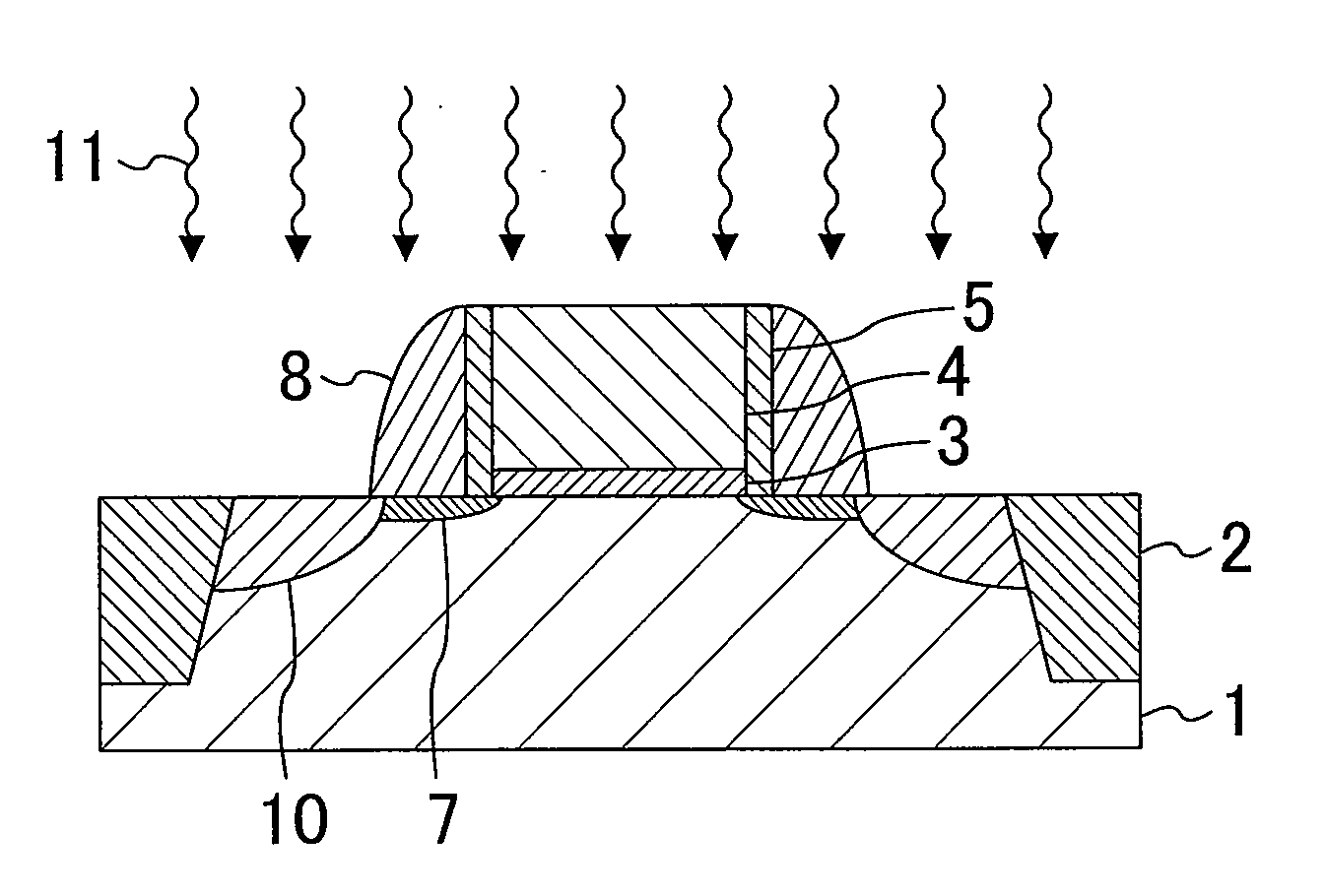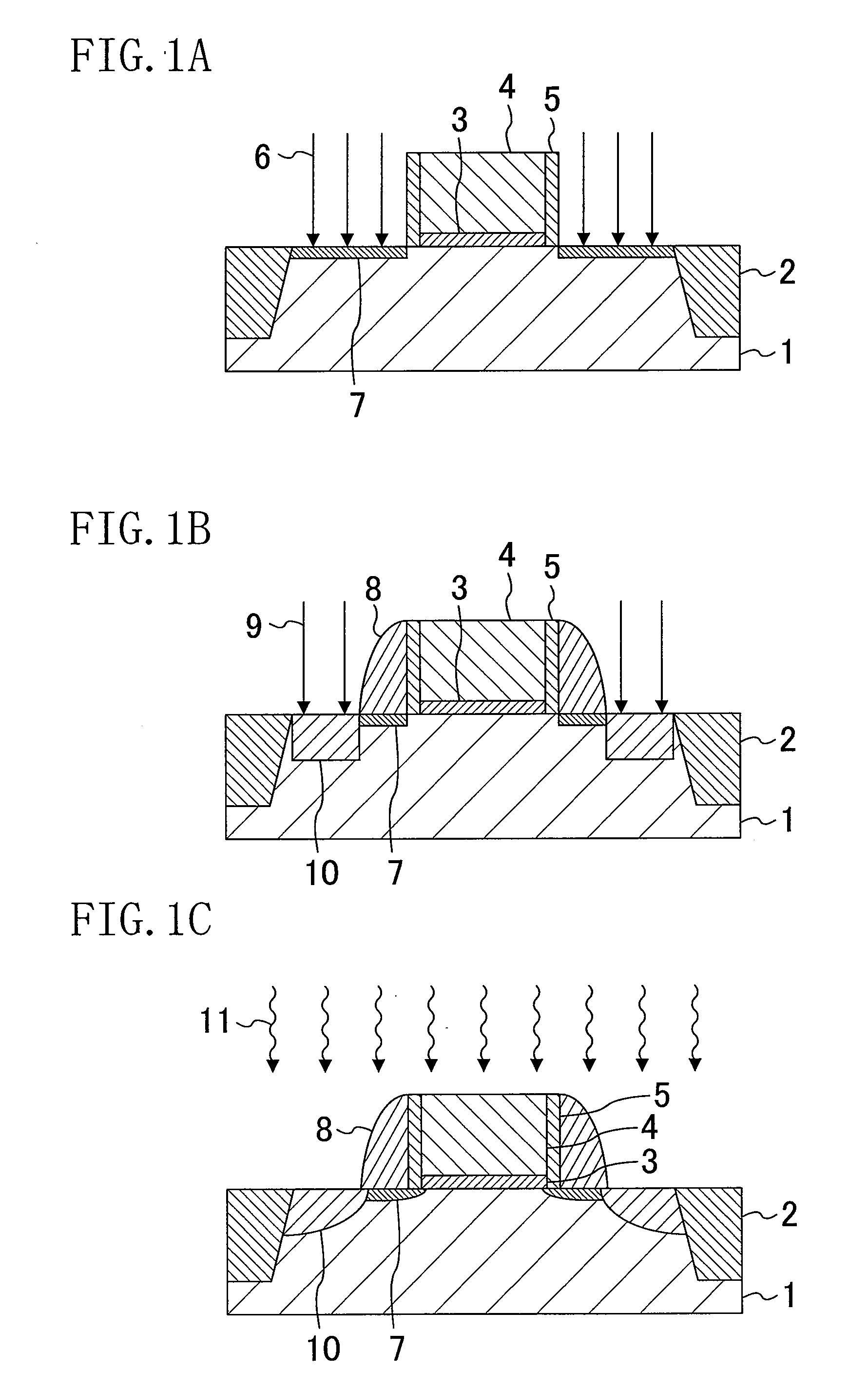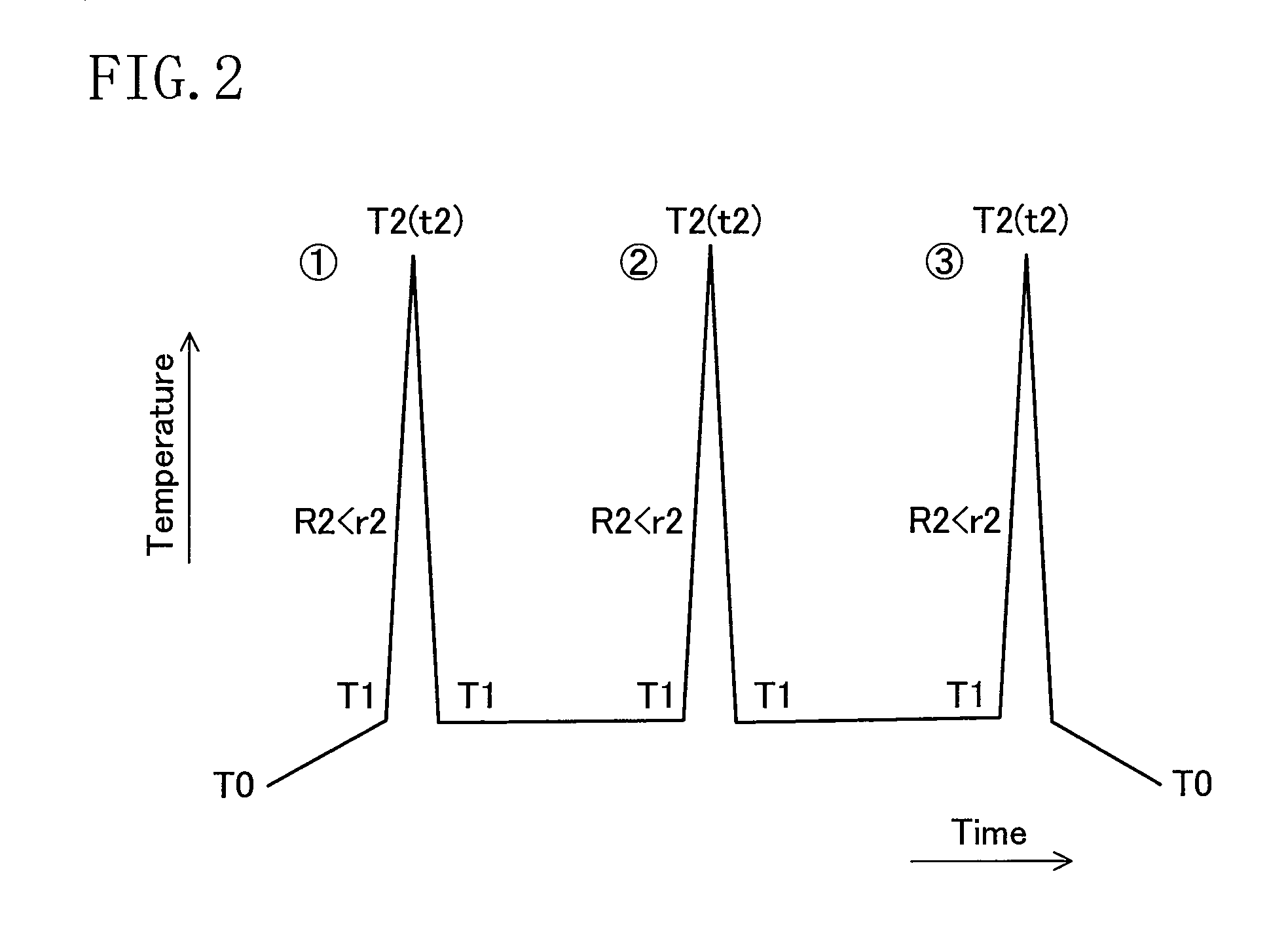Impurity-activating thermal process method and thermal process appartus
a technology of impurity activation and thermal process, which is applied in the field of impurity activation thermal process method, can solve the problems of short thermal process time, ineffectiveness, and similar millisecond annealing performed at the same time, and achieves the effect of improving the impurity activation rate, improving the impurity diffusion rate, and high impurity activation ra
- Summary
- Abstract
- Description
- Claims
- Application Information
AI Technical Summary
Benefits of technology
Problems solved by technology
Method used
Image
Examples
first embodiment
[0042]An impurity-activating thermal process method according to a first embodiment of the present invention will now be described with reference to the drawings.
[0043]FIGS. 1A to 1C are cross-sectional views each showing a step of a method for manufacturing a semiconductor device based on an impurity-activating thermal process method of the present embodiment, more specifically a method for forming a MOS (metal-oxide-semiconductor) transistor using millisecond annealing for impurity activation.
[0044]First, as shown in FIG. 1A, an isolation region 2 is formed on a silicon substrate 1, and an impurity is introduced into the silicon substrate 1 for threshold control, after which a gate electrode 4 is formed on the silicon substrate 1 with a gate insulating film 3 interposed therebetween. Then, after an offset spacer 5 is formed on the sidewall of the gate electrode 4, the silicon substrate 1 is subjected to an impurity ion implantation 6 using the gate electrode 4 and the offset space...
second embodiment
[0070]An impurity-activating thermal process method according to a second embodiment of the present invention will now be described with reference to the drawings. The method of manufacturing a semiconductor device using the impurity-activating thermal process method of the present embodiment, more specifically steps of a method for forming a MOS transistor using millisecond annealing for impurity activation, are the same as those of the first embodiment shown in FIGS. 1A to 1C. Specifically, an impurity is introduced into the silicon substrate 1 to form the extension region 7 and the source / drain region 10, and then the impurity-activating thermal process method of the present embodiment is performed. The impurity-activating thermal process method of the present embodiment will now be described in detail. FIG. 5 shows an example of a temperature sequence in the impurity-activating thermal process method of the present embodiment.
[0071]First, the silicon substrate 1 (hereinafter ref...
third embodiment
[0090]A thermal process apparatus according to a third embodiment of the present invention, more specifically a thermal process apparatus for carrying out the impurity-activating thermal process method of the first and second embodiments, will now be described with reference to the drawings with respect to a case where a flash lamp (e.g., an Xe flash lamp) is used as the heat source.
[0091]First, a millisecond annealing apparatus using an ordinary flash lamp (a millisecond annealing apparatus of a comparative example) will be described with reference to FIGS. 10A and 10B. FIG. 10A is a circuit diagram showing a general configuration of the millisecond annealing apparatus of the comparative example, and FIG. 10B illustrates an operation thereof. As shown in FIG. 10A, the millisecond annealing apparatus of the comparative example includes a condenser (the capacitance C) and a Xe flash lamp (the internal resistance r) connected in parallel to each other and to the power supply. A switch...
PUM
| Property | Measurement | Unit |
|---|---|---|
| temperature | aaaaa | aaaaa |
| temperature | aaaaa | aaaaa |
| melting temperature | aaaaa | aaaaa |
Abstract
Description
Claims
Application Information
 Login to View More
Login to View More - R&D
- Intellectual Property
- Life Sciences
- Materials
- Tech Scout
- Unparalleled Data Quality
- Higher Quality Content
- 60% Fewer Hallucinations
Browse by: Latest US Patents, China's latest patents, Technical Efficacy Thesaurus, Application Domain, Technology Topic, Popular Technical Reports.
© 2025 PatSnap. All rights reserved.Legal|Privacy policy|Modern Slavery Act Transparency Statement|Sitemap|About US| Contact US: help@patsnap.com



